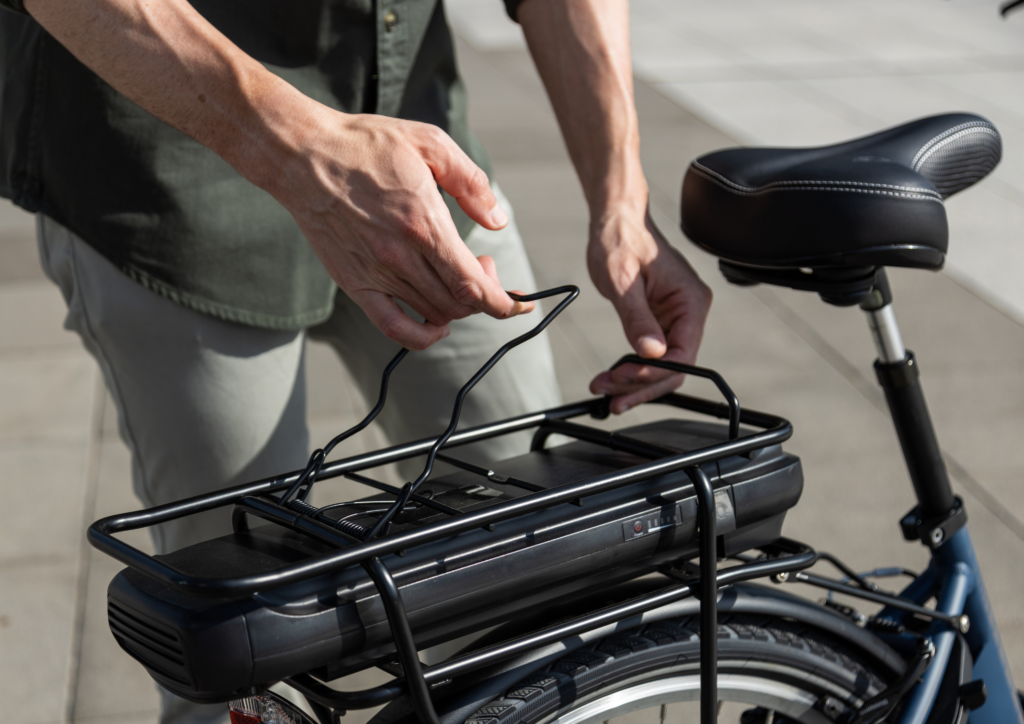
E-bikes have revolutionized the way we get around, offering an eco-friendly and fun alternative to traditional transportation. However, as the popularity of e-bikes continues to soar, so does the importance of proper battery maintenance. In this article, we’ll dive into the world of e-bike batteries and explore the key factors that can help you maximize your ride’s performance.
The Anatomy of an E-Bike Battery
Before we dive into the nitty-gritty of battery maintenance, it’s essential to understand how e-bike batteries work. Essentially, an e-bike battery is a lithium-ion battery designed to store energy and release it as needed to power your ride. The average e-bike battery has a capacity ranging from 400-1000 Wh (watt-hours), with some high-performance models sporting capacities of up to 2000 Wh. With this in mind, let’s explore the key components that make an e-bike battery tick: the cells, the BMS (battery management system), and the casing.
Why Proper Battery Maintenance is Crucial
Proper battery maintenance is vital to ensure your e-bike remains running smoothly and efficiently. A well-maintained battery can significantly improve your ride’s performance, range, and overall lifespan. On the other hand, neglecting battery maintenance can lead to a host of issues, including reduced range, slow acceleration, and even complete battery failure. In this section, we’ll explore some of the most common battery-related problems and how to prevent them.
Tips for Maximizing Your E-Bike’s Performance
So, what can you do to ensure your e-bike‘s performance remains top-notch? Here are some expert tips to get you started: Start by keeping your battery away from extreme temperatures (below 32°F or above 122°F). This will help prevent damage and reduce the risk of overheating. Next, make sure to charge your battery regularly, aiming for a full charge every 3-5 times it’s used. Avoid deep discharging, as this can cause permanent damage. Finally, keep an eye out for signs of wear and tear, such as swelling or corrosion, which can indicate a more significant issue is brewing.
Best Practices for Charging Your E-Bike Battery
When it comes to charging your e-bike battery, there are a few best practices to keep in mind. First and foremost, avoid overcharging! This can cause excessive heat buildup, leading to reduced performance and even premature battery failure. Instead, aim for a gentle charge, keeping an eye on the battery’s state of charge (SOC). As a general rule, it’s recommended to charge your e-bike battery when it’s between 20-80% SOC. Remember to also keep your charger away from sources of electromagnetic interference (EMI), such as computers or cordless phones.
Common Mistakes to Avoid When Charging Your E-Bike Battery
While charging your e-bike battery can seem like a straightforward process, there are a few common mistakes to avoid. First, don’t leave your charger plugged in for extended periods! This can cause the battery to overheat and potentially reduce its lifespan. Second, refrain from mixing different chargers or charging methods (e.g., using a fast charger on a slow charger). This can lead to confusion and potentially damage your battery. Finally, avoid exposing your e-bike battery to moisture or humidity, as this can accelerate corrosion and reduce the battery’s overall performance.
Rev Up Your E-Bike’s Performance: The Bottom Line
In conclusion, proper battery maintenance is crucial for maximizing your e-bike‘s performance. By following these simple tips, you’ll be well on your way to enjoying a smooth, efficient ride. Remember to keep your battery away from extreme temperatures, charge it regularly, and avoid overcharging. Additionally, be mindful of signs of wear and tear, and seek professional help if you notice any issues. With the right care and attention, your e-bike‘s battery will remain strong and reliable for years to come. Contact Eko Life Malaysia today to learn more about our range of e-bikes, ebike batteries, and accessories!

I completely agree with the importance of e-bike battery maintenance. Doing it right can save us riders money and headaches in the long run.
Thank you so much, Luna! You’re absolutely right! Regular battery maintenance can prevent costly repairs and ensure your e-bike runs smoothly. If you have any questions or concerns about battery maintenance or e-bike servicing, please don’t hesitate to reach out to us at [email protected] or +60 3-7890 3042 for expert advice and assistance.
I wish more e-bike owners knew about avoiding moisture exposure to their batteries. A wet battery can ruin an entire ride, so it’s crucial to protect them from rain and humidity.
Absolutely, May! Water and moisture are indeed a major threat to e-bike batteries, as they can lead to corrosion, electrical shorts, and even complete battery failure. It’s great that you’re emphasizing the importance of keeping batteries dry. At Eko Life Malaysia, we recommend storing e-bike batteries in a dry, cool place when not in use. If you’re caught in the rain, try to dry the battery as soon as possible by gently wiping it with a soft cloth. If you’re unsure about how to properly store or care for your e-bike battery, feel free to reach out to us at [email protected] or call us at +60 3-7890 3042. We’re here to help.
The points mentioned in this blog post are very helpful, especially about regular charging and not overcharging the battery. I’ve noticed a significant difference in my e-bike’s performance since I started following these tips.
Hi Fathin, thank you for sharing your positive experience with the blog post! We’re glad to hear that you’ve noticed a significant improvement in your e-bike’s performance since following our tips. Proper battery maintenance is indeed crucial, and we appreciate your diligence in taking care of your e-bike’s battery. If you have any further questions or concerns, please don’t hesitate to reach out to us at [email protected] or call us at +60 3-7890 3042. Keep riding safely!